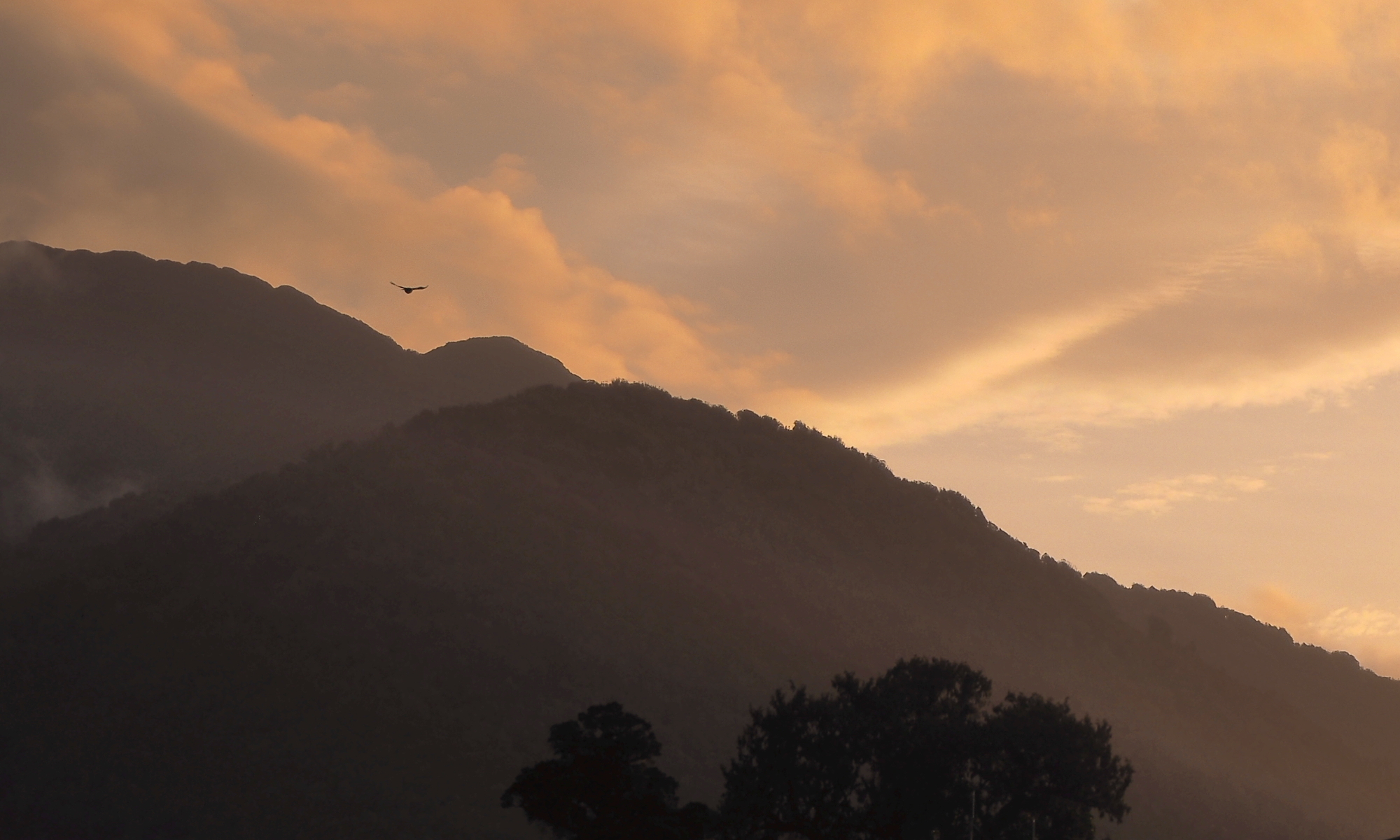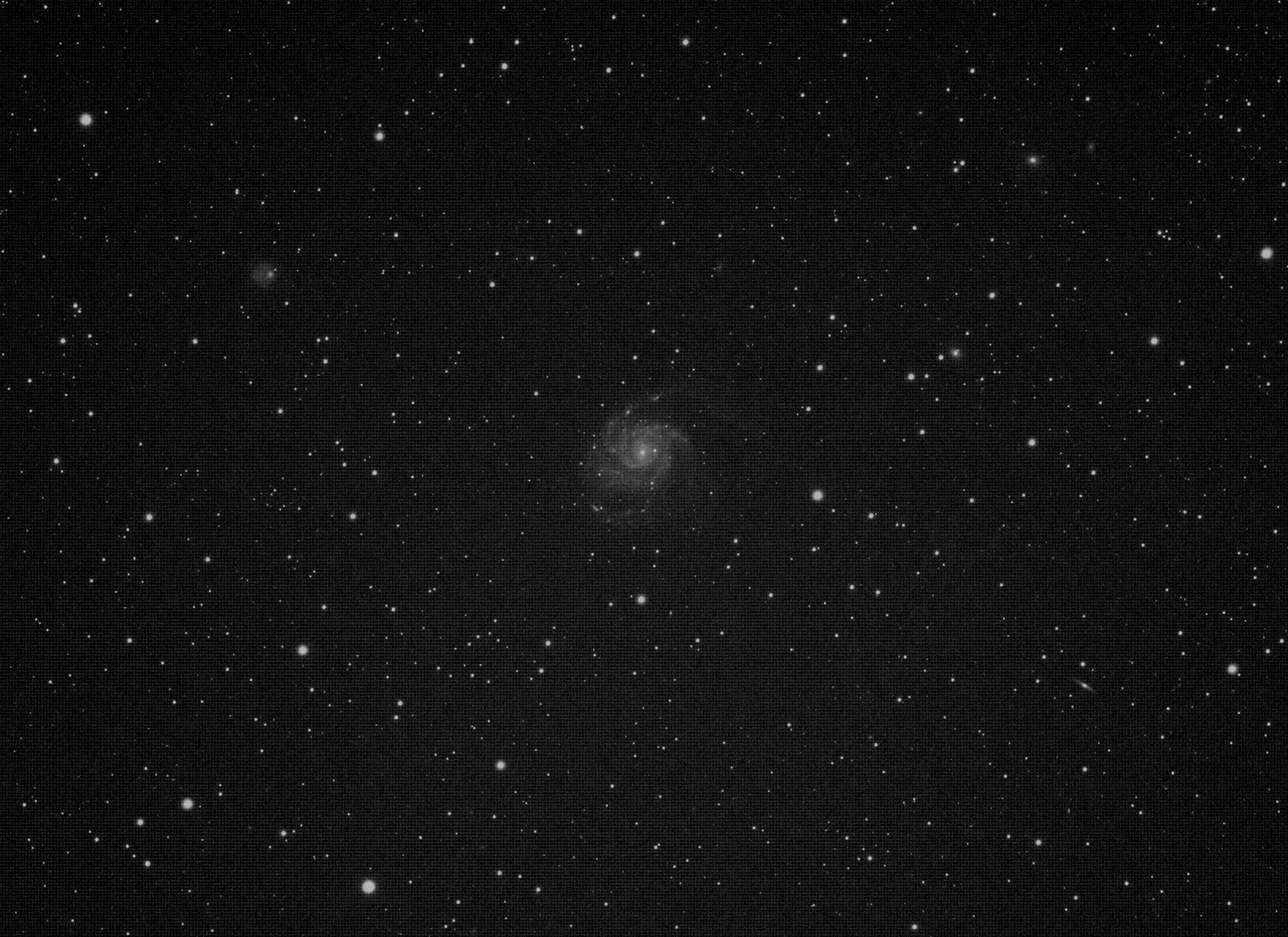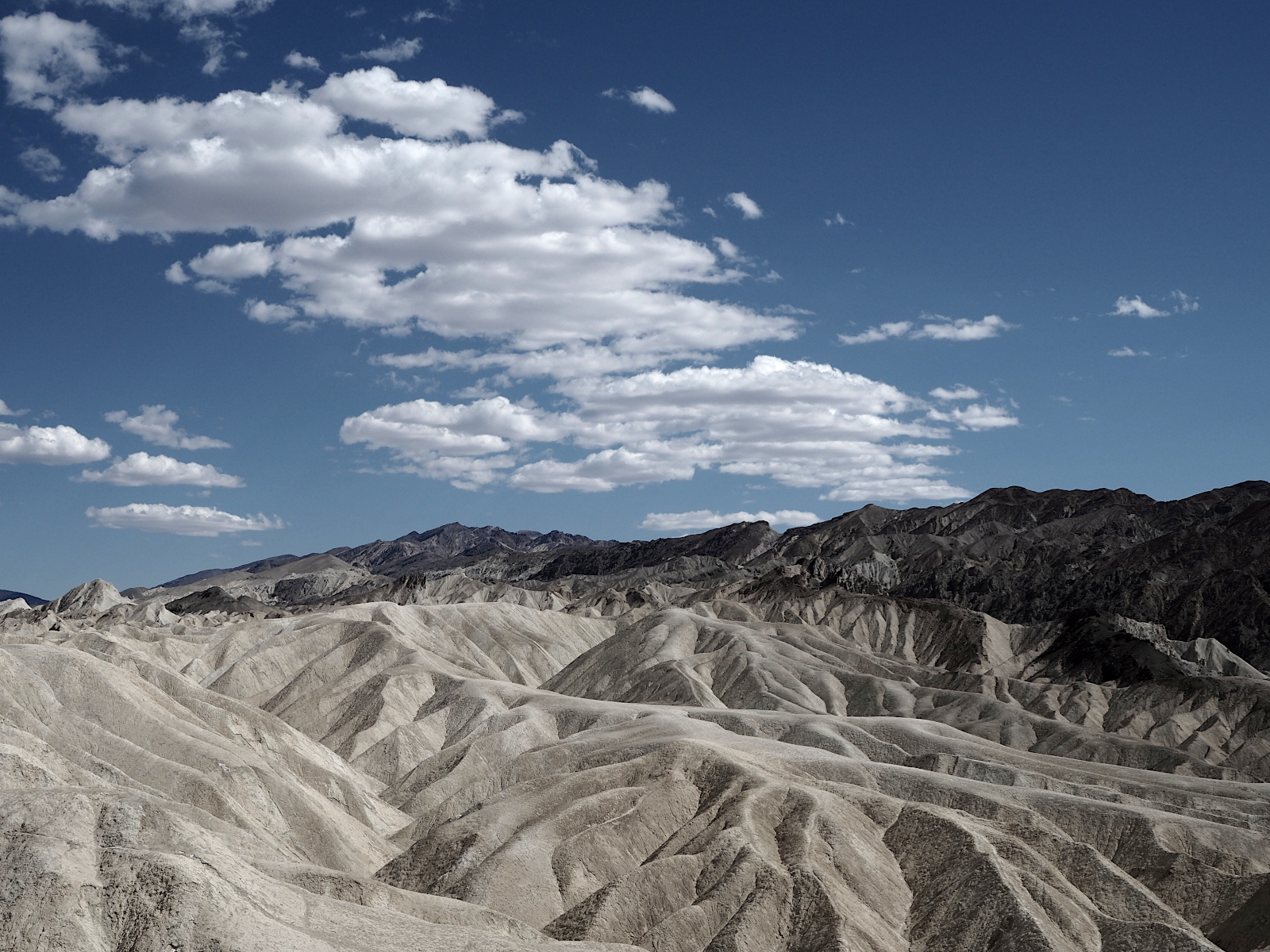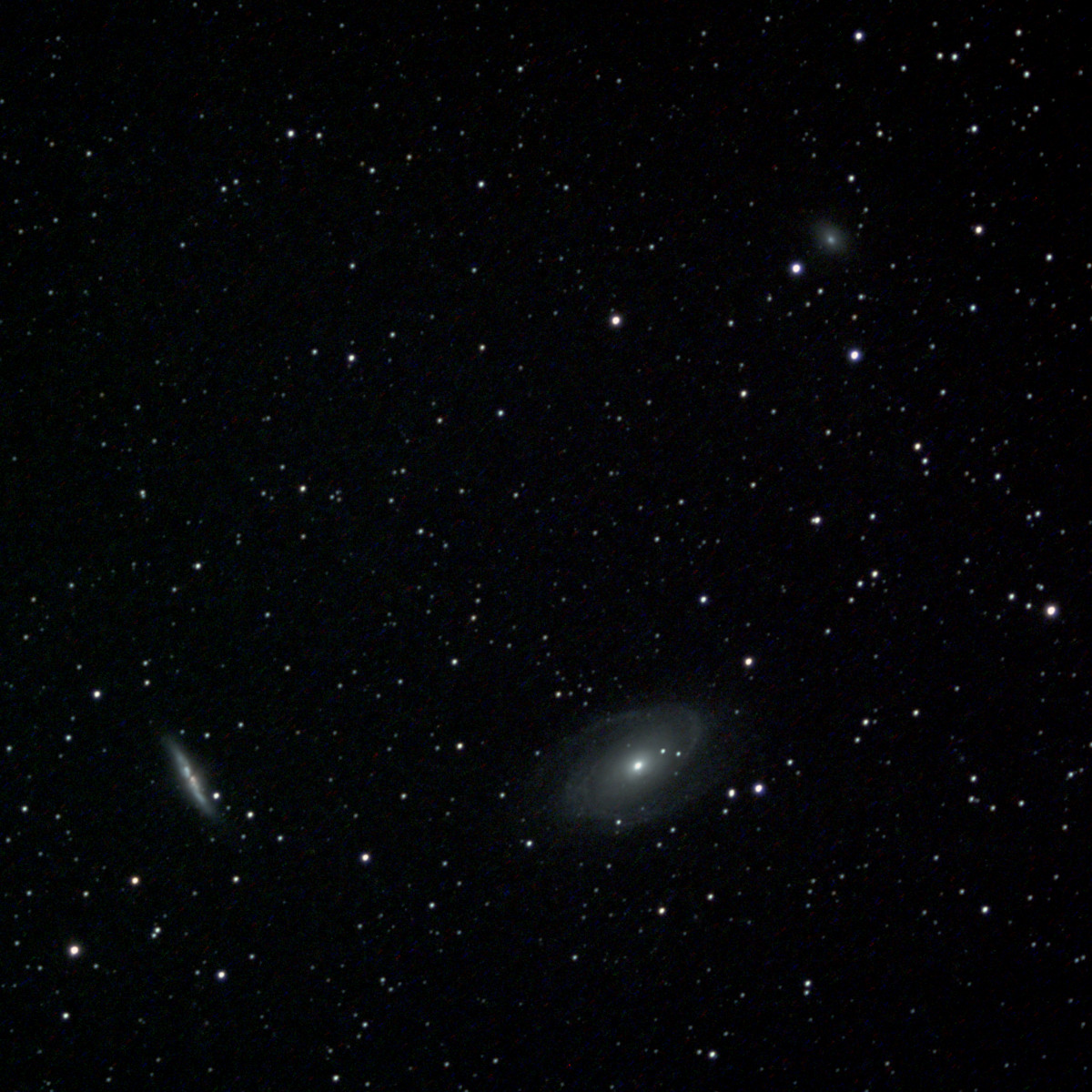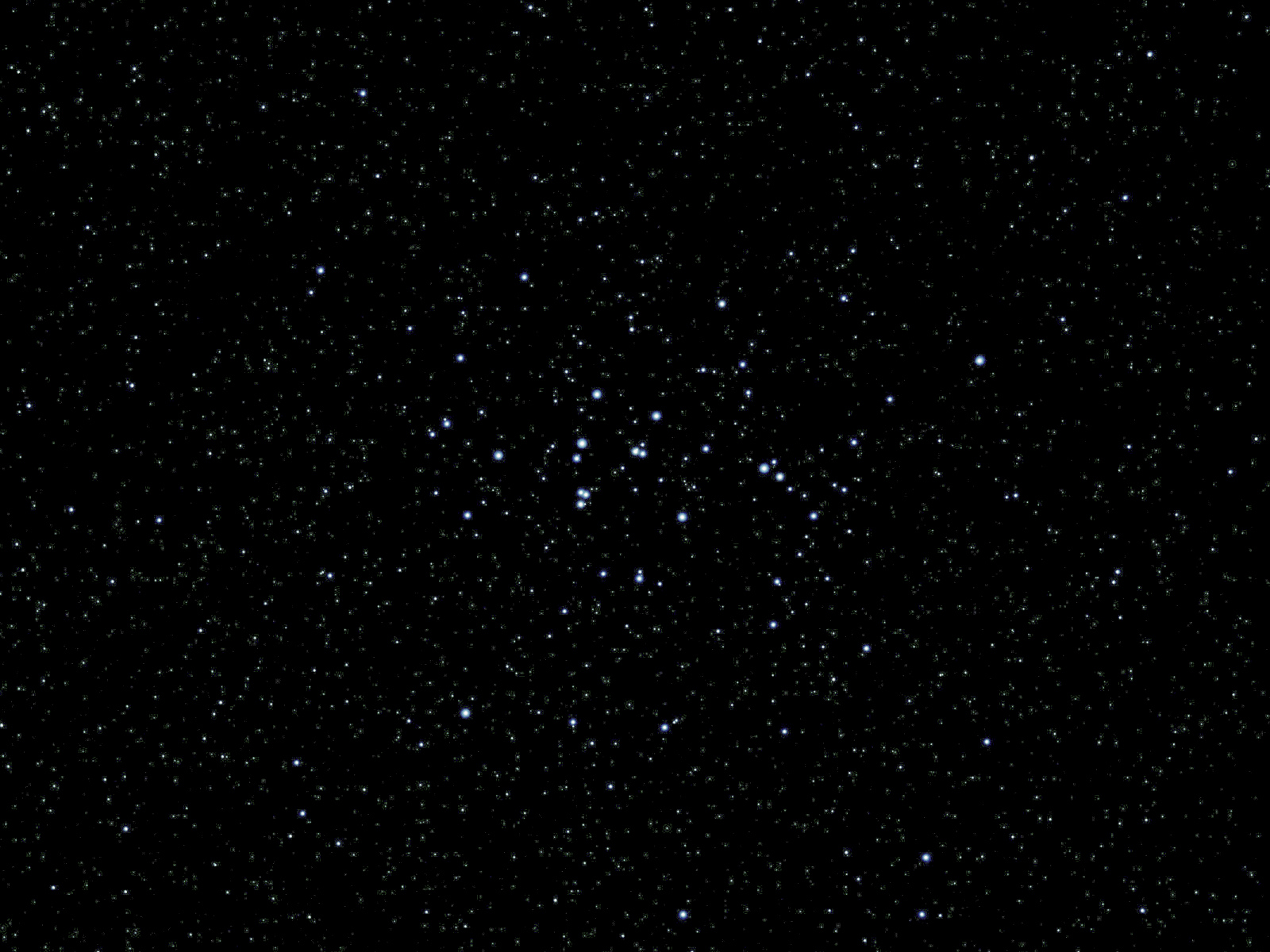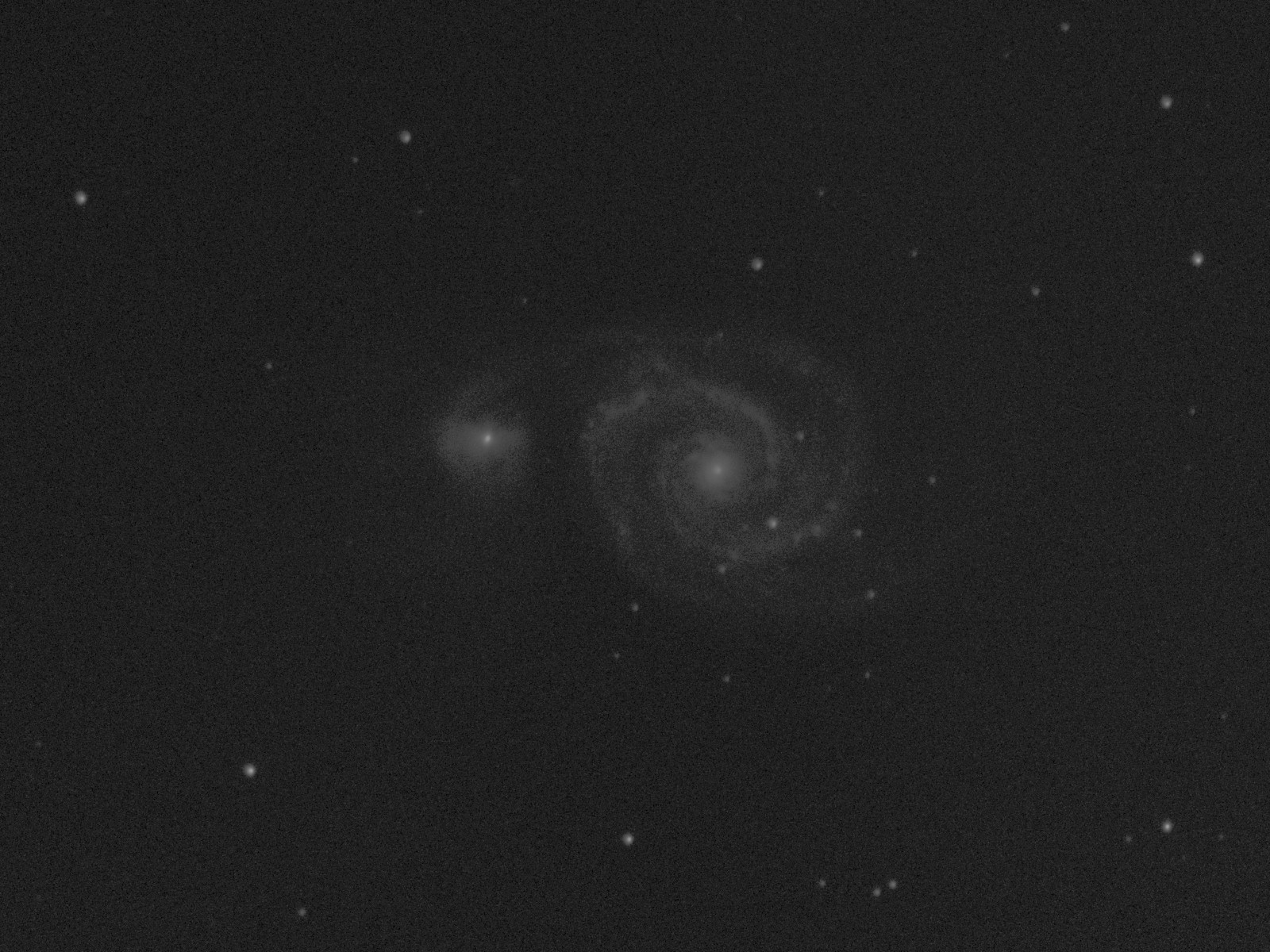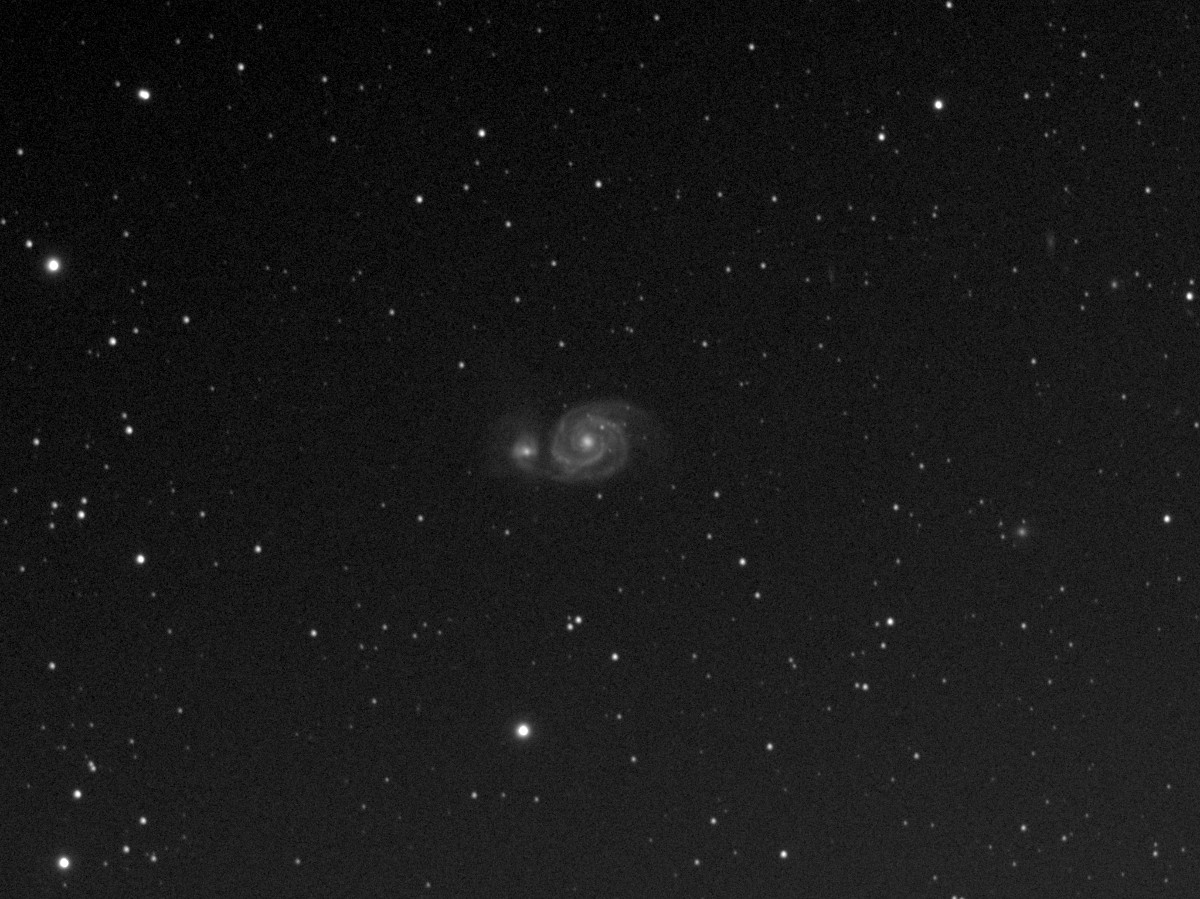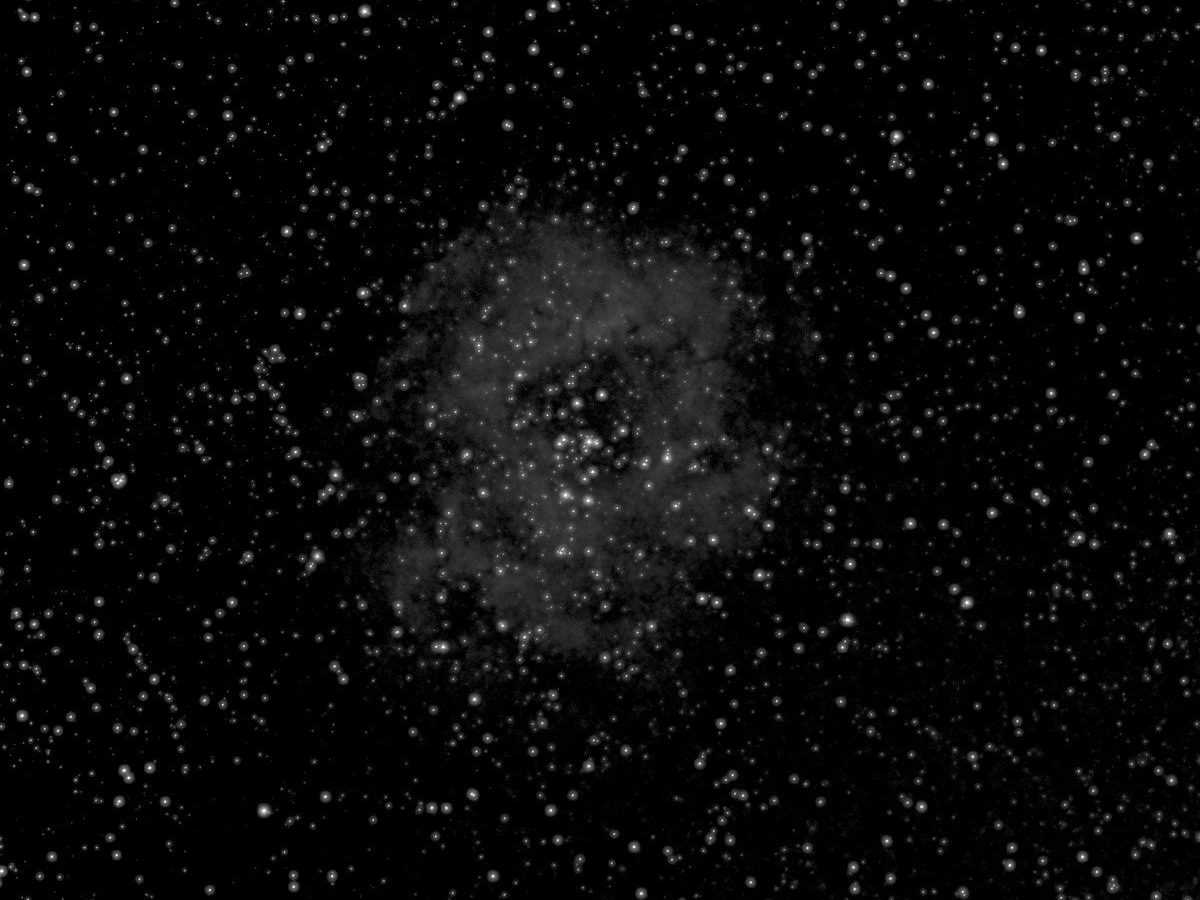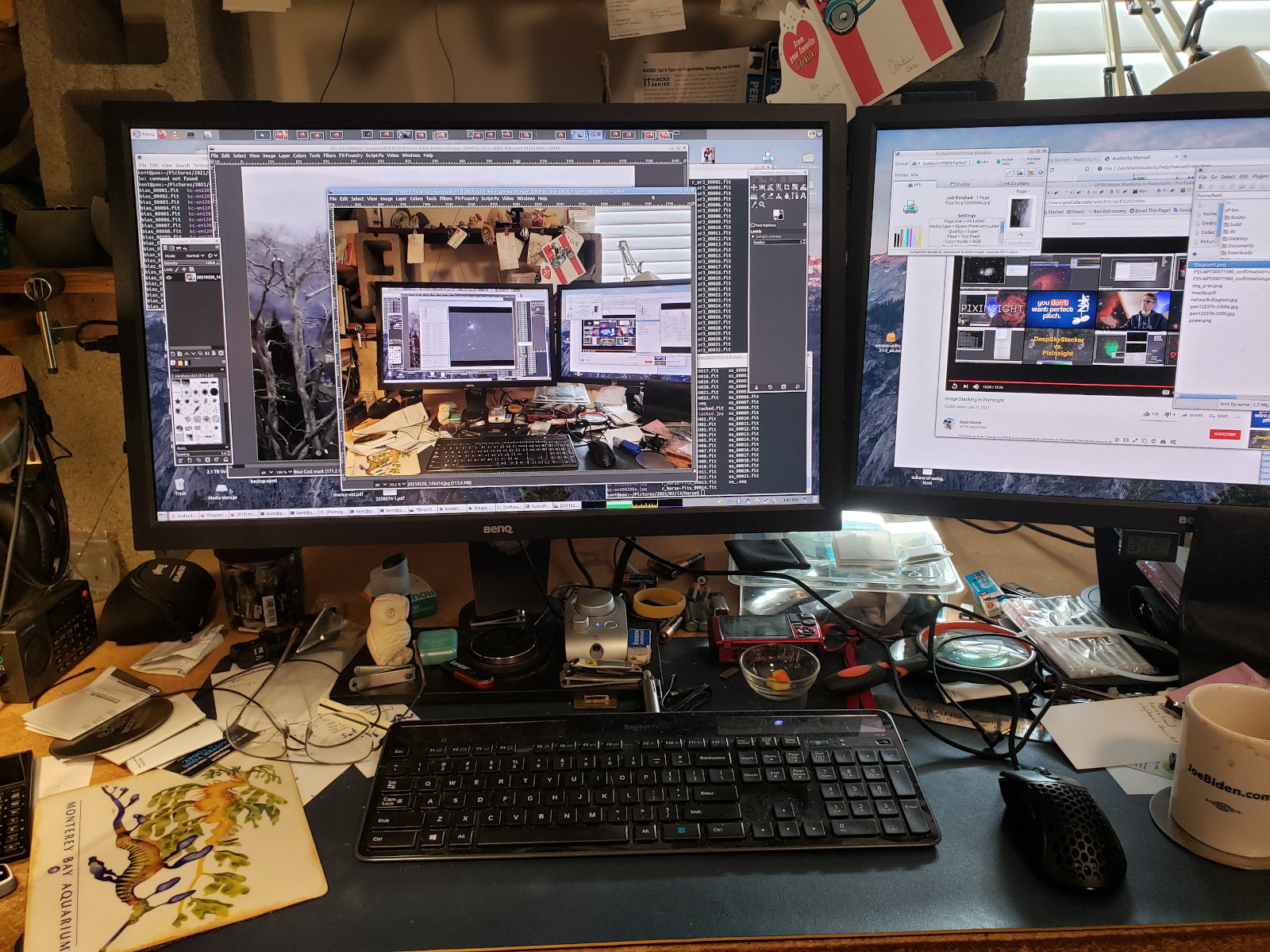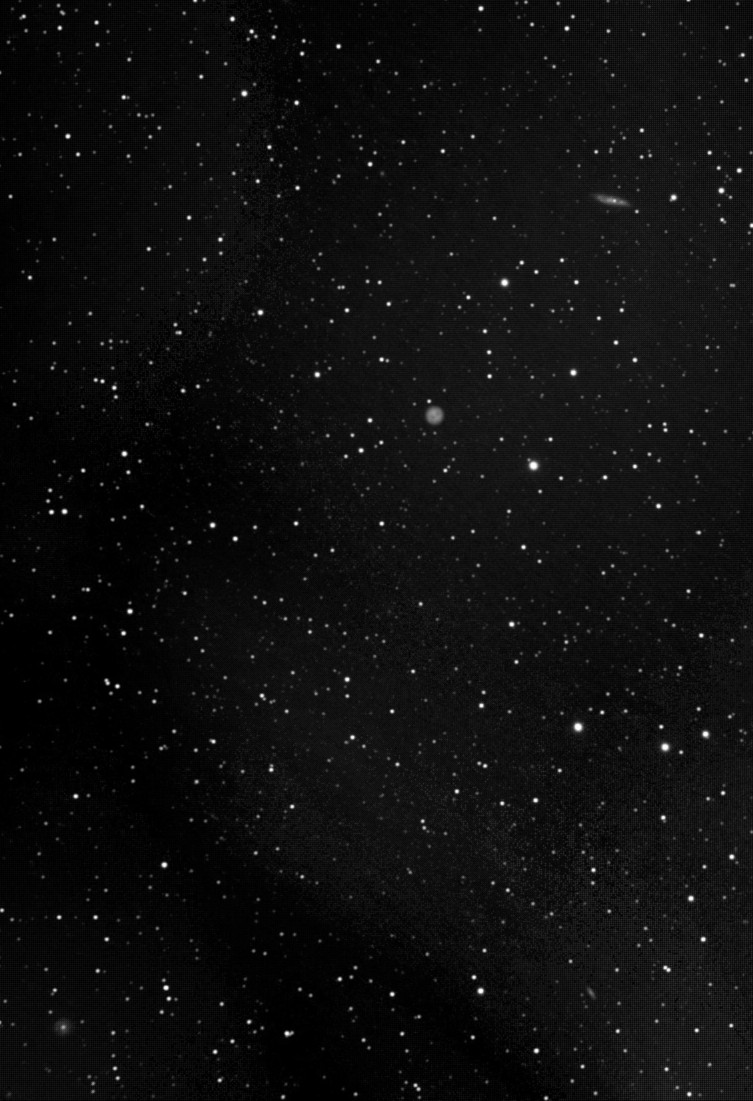
M97 is upper center right — you can make out the 2 “eyes”; M108 is upper right; NGC 3656 is barely visible in the lower left corner, and NGC 3549 is barely visible in the lower right. About the limit of the conditions, the equipment, and the image processing skill.
Here I try to bring out the noise that I worked so hard to eliminate in the first photo. As a photo, I think this one is better…
